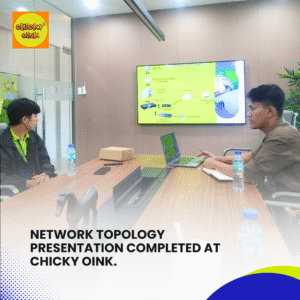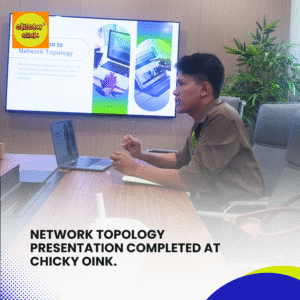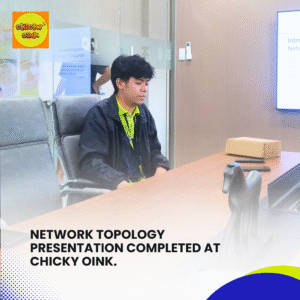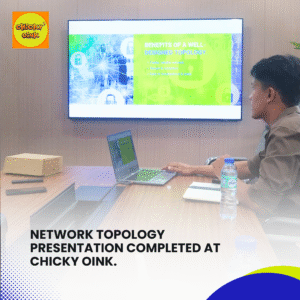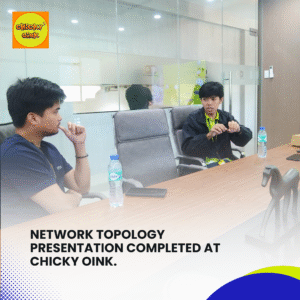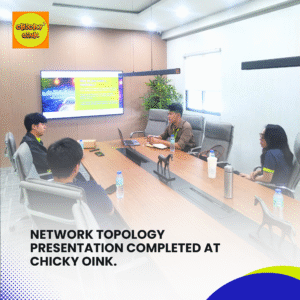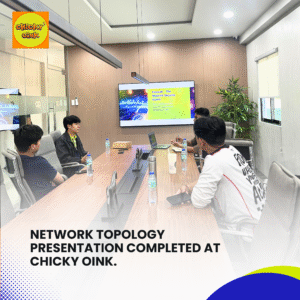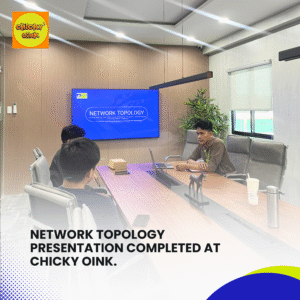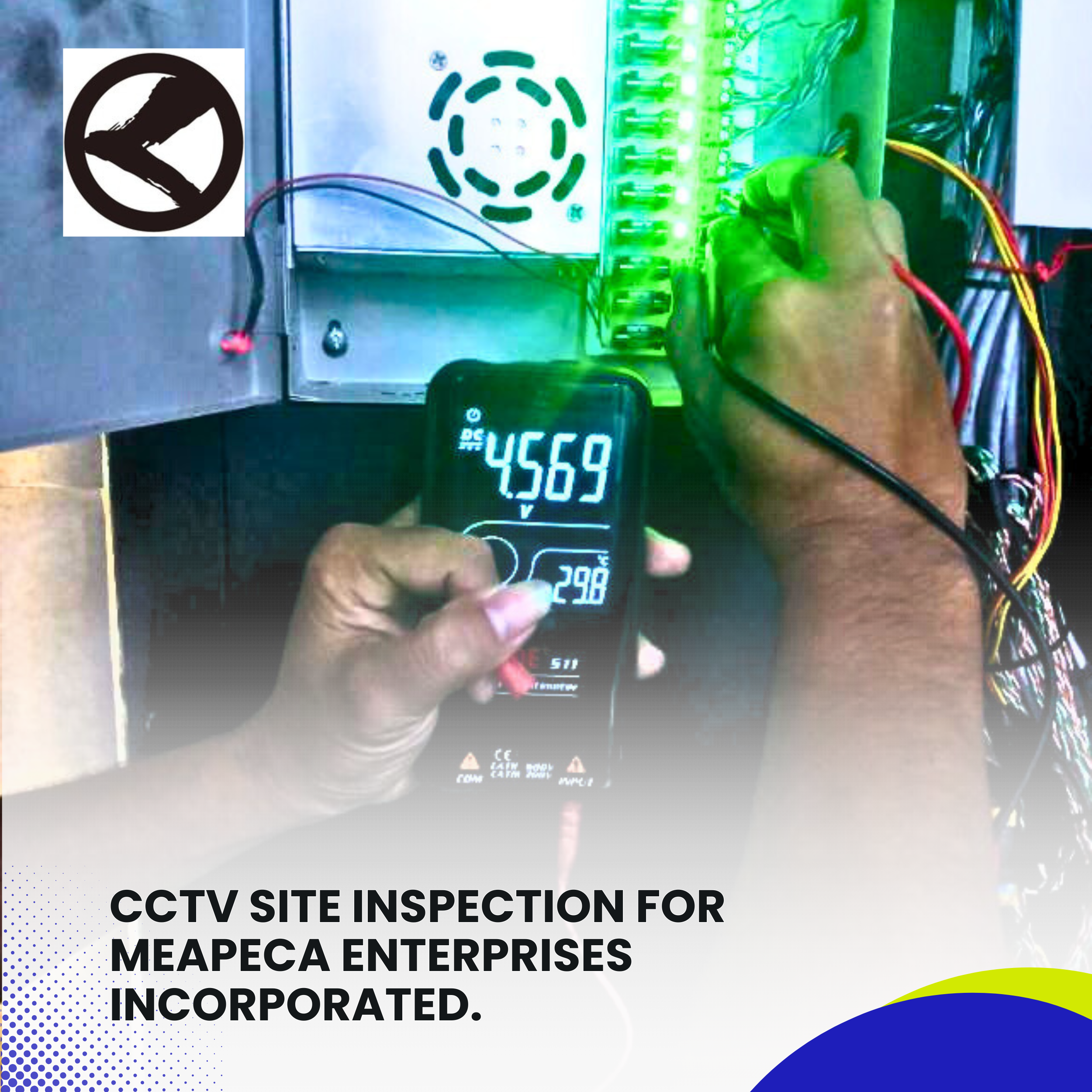CCTV IT Support at San Jose Pension House. Introduction. In line with the company’s commitment to delivering reliable technical assistance and maintaining efficient surveillance systems, the IT support team conducted a troubleshooting …
Network Topology Presentation Completed at Chicky Oink.
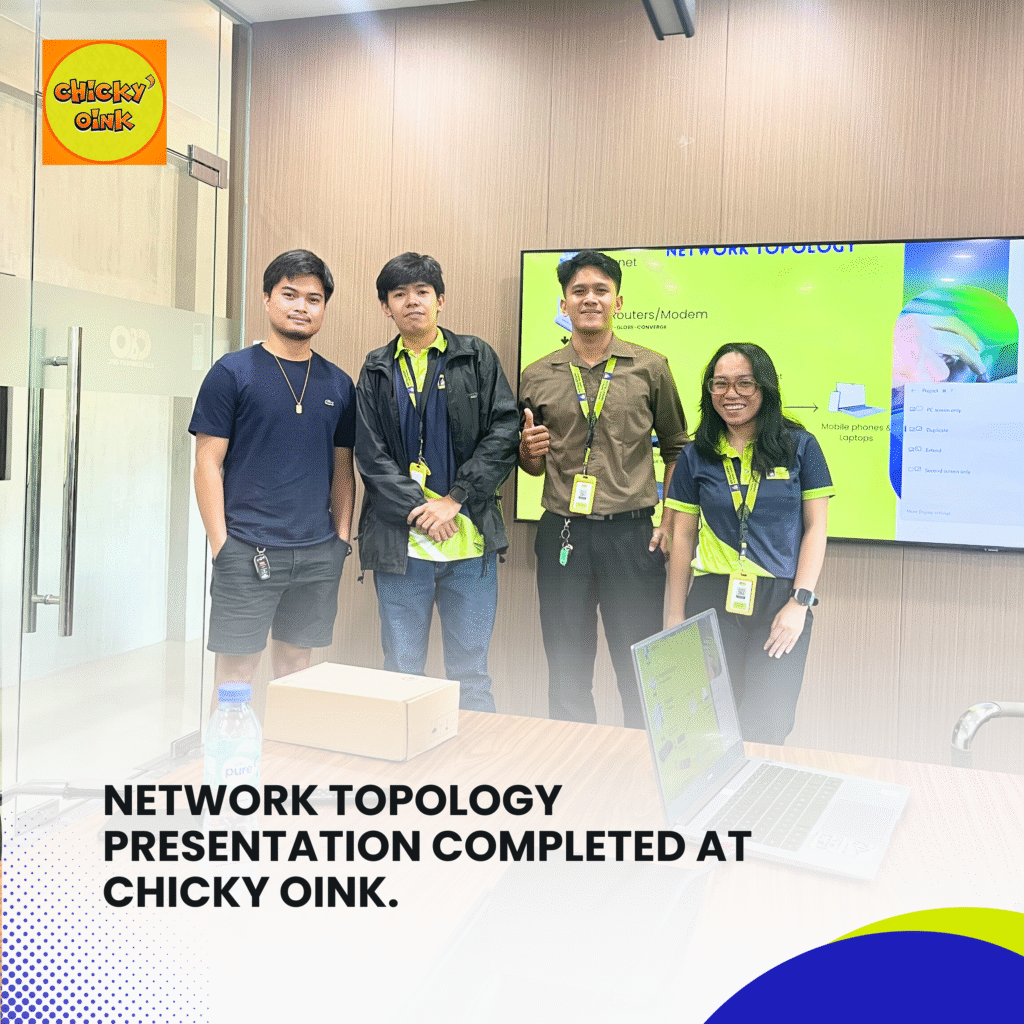
Introduction
In today’s digital business landscape, the reliability and efficiency of a network play a pivotal role in driving operations and ensuring secure communication between devices and systems. Recognizing the critical value of a well-structured network, Chicky Oink, a fast-growing food business with a vision for seamless operations and digital innovation, invited our team at InstallersPH IT Solutions to present a detailed explanation of their network topology design.
This presentation wasn’t just a review of cabling routes and hardware placements—it was a comprehensive learning session that empowered Chicky Oink’s management and technical staff to better understand how the network supports their daily business processes. We broke down complex topics into practical, easy-to-grasp concepts, focusing on three major components of their setup: the role of the Internet Service Provider (ISP), the function and importance of a Load Balancer, and why a Firewall is critical to secure network infrastructure.
Overview of the Session.
Held on-site at Chicky Oink’s newly established central office, the session began with a visual walkthrough of the network topology—an architectural diagram illustrating how different components such as routers, switches, access points, servers, and security systems interconnect. The goal was not only to showcase how everything is connected but also to explain why each piece is necessary and how they collectively contribute to a streamlined, secure, and reliable business IT environment.
Our audience consisted of the operations manager, IT personnel, and administrative staff, all of whom expressed genuine interest in understanding the underlying technologies powering their business systems.
1. The Role of the Internet Service Provider (ISP).
We began our presentation by demystifying the ISP—the starting point of any internet-based infrastructure.
What is an ISP?
An Internet Service Provider is a company that delivers internet connectivity to businesses and individuals. For Chicky Oink, their ISP acts as the bridge between their internal network and the external world, enabling online transactions, cloud backups, VoIP communication, and web access.
How It Integrates Into the Topology.
We explained that the ISP’s modem is the first external device that connects to Chicky Oink’s system. This modem is connected to a main router that then distributes the internet to multiple sub-networks or VLANs within the office. We visually mapped out how the ISP line enters the premises and connects to:
The main router
A load balancer
A firewall appliance
And eventually to switches, access points, and internal workstations
We emphasized that having a stable ISP is like laying a strong foundation for a building. Any interruptions, downtimes, or unstable signals from the ISP can ripple through the business, affecting customer orders, email communications, and security systems.
Redundancy with Multiple ISPs.
The Chicky Oink office is equipped with two ISPs for redundancy. This means if one ISP experiences downtime or poor connectivity, the system automatically switches to the backup provider, ensuring uninterrupted business operations. This dual ISP setup leads directly into the next topic we discussed: Load Balancing.
2. What is a Load Balancer?
A Load Balancer is a piece of hardware or software that intelligently distributes incoming and outgoing traffic across multiple network paths or servers. In Chicky Oink’s setup, it sits between the ISP lines and the internal network.
Why Load Balancing Matters?
We illustrated the load balancer’s importance through simple analogies. One example: imagine a restaurant with only one cashier. If too many customers come at once, that one cashier becomes overwhelmed. However, if you add a second cashier and use a person to direct each customer to the next available window, the process becomes faster and smoother. That “person” is the load balancer.
In the Chicky Oink setup:
Two ISP lines feed into the load balancer.
The load balancer evaluates which ISP line is currently performing better or available.
It routes internet traffic accordingly, optimizing for speed, reliability, and uptime.
Benefits to Chicky Oink.
The use of a load balancer offers several benefits:
Failover Protection: If ISP #1 fails, ISP #2 takes over seamlessly.
Optimized Bandwidth: The load is evenly distributed across both ISPs.
Improved Performance: No bottlenecks from overused single connections.
Greater Uptime: Redundancy means fewer disruptions to business operations.
This setup is especially valuable for businesses that rely on real-time applications like cloud-based Point of Sale (POS) systems, inventory monitoring, or remote camera access—all of which Chicky Oink actively uses.
3. The Importance of a Firewall.
The next major segment of our presentation focused on Firewall protection, which serves as the first line of defense for any internal network.
What is a Firewall?
A Firewall is either a software program or a hardware device (in Chicky Oink’s case, it’s a dedicated hardware unit) that monitors, filters, and controls all incoming and outgoing network traffic. It is programmed with a set of rules that determine what traffic is allowed and what is blocked.
Think of it as a security guard stationed at the entrance of a building, checking every visitor and only allowing authorized personnel to enter.
Why Chicky Oink Needs a Firewall?
Given that Chicky Oink stores sensitive business information—ranging from sales reports to employee data—and uses cloud applications daily, having an unprotected network would leave them vulnerable to:
Unauthorized access
Viruses and malware
Ransomware attacks
Phishing and data leaks
Internal misconfigurations
A firewall at Chicky Oink ensures that:
Only trusted websites and applications can send or receive data.
Intrusion attempts are detected and blocked.
Employee browsing is restricted to business-approved sites, minimizing distraction and exposure.
Logs are maintained for auditing and troubleshooting.
We also presented an actual scenario where a company without a firewall experienced a data breach due to an unfiltered open port. By contrast, a properly configured firewall would have blocked that unauthorized connection attempt immediately.
Visual Aids and Diagrams.
To ensure the presentation was engaging and easily understandable, we utilized clear visual aids and high-resolution diagrams that illustrated the structure and flow of Chicky Oink’s network topology.
Topology Map.
We presented a comprehensive topology map that visually outlined how different components of the network are interconnected. This included the following sequence:
ISP lines as the source of internet connectivity
Connection to the Load Balancer for optimized bandwidth and redundancy
Traffic passing through the Firewall Appliance for network protection
Distribution to the Core Switch as the central network hub
Extension to Access Points and Workstations throughout the premises
The diagram also illustrated integration with key business devices such as:
Biometric Attendance Systems
IP CCTV Cameras
Point-of-Sale (POS) Systems
Wi-Fi Access Points for wireless connectivity
Simplified Explanation.
Instead of conducting a live demonstration, we focused on delivering layman-friendly explanations tailored to the audience’s background. Each major component of the topology was broken down using simple analogies and real-world examples to illustrate its purpose and benefit. For instance:
The Load Balancer was explained as a “traffic manager” that chooses the best available road (ISP) to avoid congestion.
The Firewall was described as a “security guard” checking what comes in and out of the network.
The ISP lines were likened to water pipes feeding internet into the system, with the Load Balancer deciding which one to use at any given time.
This approach helped make the concepts more relatable and accessible. By translating technical terms into familiar scenarios, the audience was able to grasp how the network functions without being overwhelmed by jargon.
As a result, the Chicky Oink team left the presentation with a much clearer understanding of how their IT infrastructure works—and why each part of it matters to their day-to-day operations.
Conclusion
The Network Topology Presentation at Chicky Oink was more than just a technical overview; it was an investment in knowledge and understanding. By educating the team on the crucial components of their IT network, we helped demystify the complex infrastructure that supports their daily business processes.
The combined use of multiple ISPs, a load balancer, and a robust firewall ensures that Chicky Oink’s network is:
Secure from external and internal threats
Resilient in the face of ISP downtime
Efficient in distributing bandwidth across all connected devices
Transparent and auditable for compliance and monitoring
As technology continues to evolve, so will Chicky Oink’s infrastructure—with scalable, smart, and secure systems in place. And through collaborative presentations like this one, we aim to keep the client both informed and empowered.
Case Studies
IT Support at Bernie Menze Residence. Introduction. As part of the company’s commitment to providing reliable and efficient technical assistance, the IT support team conducted a service visit to the Bernie Menze …
Site Inspection for MEAPECA ENTERPRISES INCORPORATED. Introduction. As part of the company’s ongoing commitment to maintaining efficient and reliable electrical and surveillance systems, a site inspection was recently conducted at MEAPECA Enterprises …

